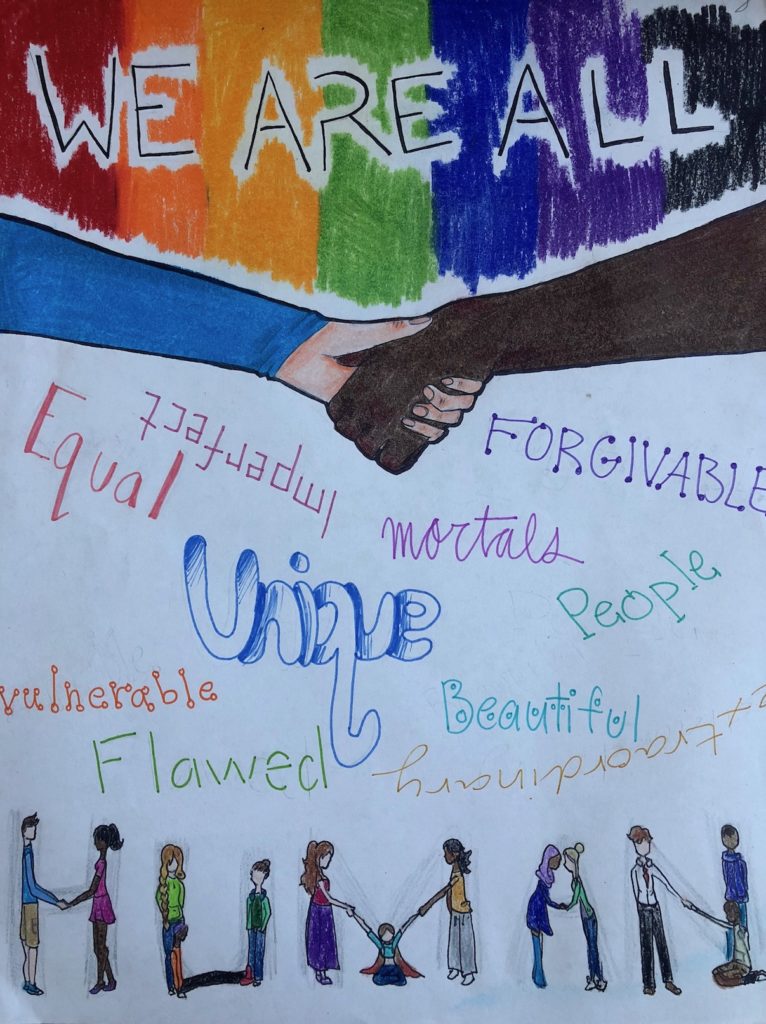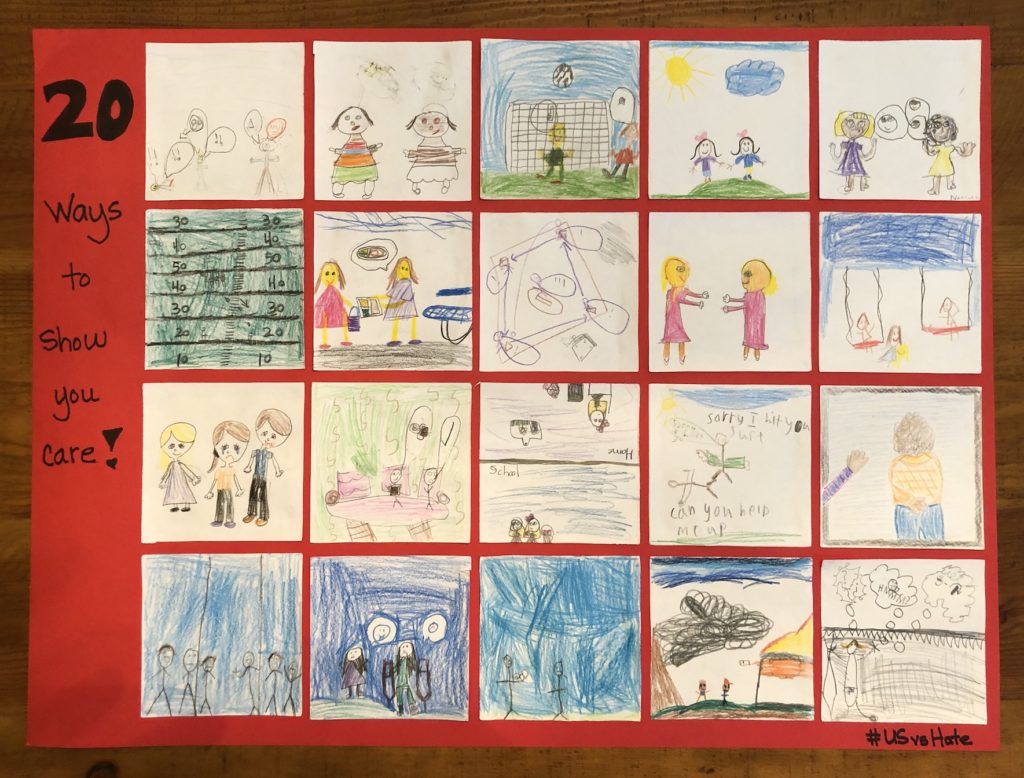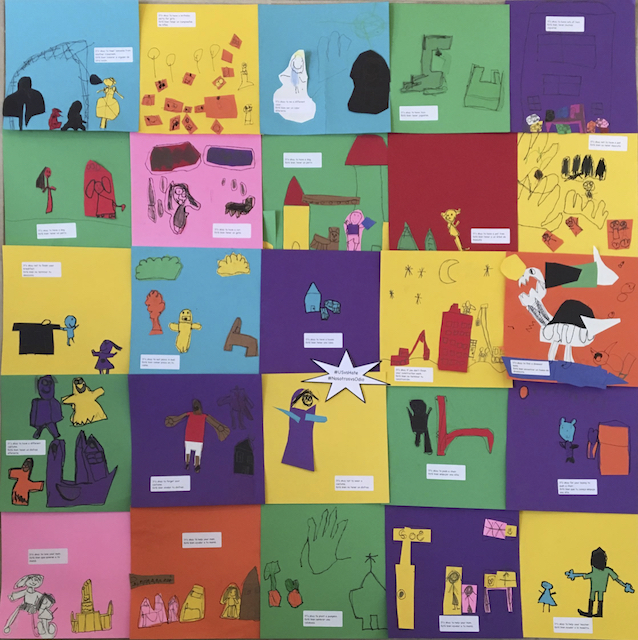Second Grade, National City, CA
“Your words have power!” Second graders made this thought-provoking #USvsHate video (a finalist in our winter contest) that will make sure other children consider the power of their own words to include or exclude.
As Mrs. Kruse describes, “Our class was inspired by the powerful words of Martin Luther King. We noticed the presence of hateful speech around us, and after a series of lessons from the Human Rights Campaign/Welcoming Schools, the students decided to create a video to highlight how words can either hurt or heal.”
Lessons included Words That Hurt and Words That Heal,Name Calling And Feeling Safe In School and Making Decisions Ally or Bystander, all available at http://usvshate.org/foundational-anti-hate-lessons/.
Mrs. Kruse adds, “I altered the ‘ally or bystander’ lesson a little and added situations students have dealt with at school. I also made different signs with images to make them more easily accessible for ELLs for the four corners of our room.”
9th Grade, San Diego
A ninth grader made our first anti-sexism message, a winter finalist! To us, this #USvsHate piece was a call to love oneself regardless of negative societal expectations about who women and girls “should” be. To invite this message, teacher Patrick Leka taught Facing History’s “Identity and Labels” and “Identity and Names” lessons, followed by a screening of and class discussion around Lee Hirsch’s documentary film BULLY.
Darcie, 8th Grade, San Diego
Darcie, an eighth grader, made this finalist #USvsHate image insisting on common humanity after the class “did the Zinn Project “Whose More Perfect Union?” lesson, Constitution Role Play: Whose “More Perfect Union”? and The Constitutional Convention: Who Really Won? (Zinn Education Project/Rethinking Schools) about how the Constitution could’ve been more diverse.” (This lesson can be found here: http://usvshate.org/more-specific-anti-hate-lessons/). As teacher Mrs. Van De Vanter describes, “the students really got into role-playing different groups who were or were not represented in the founding of our nation.” Darcie reflected that “sometimes it’s hard to hear the voices of minorities in society, so it’s important to acknowledge there are people with different views.”
3rd Grade, Cardiff, CA
The third graders of Room 11 at Cardiff Elementary in the Cardiff School District made this poster-sized bulletin board collectively, to share out “20 ways to show you care.” As teacher Kim Douillard describes, “This is a collaborative project that my students did after reading the book Strictly No Elephants (and when we were partway through the novel Save Me a Seat.) Both books have themes of exclusion and mean acts. They brainstormed 20 ways to show they care…and then created the poster (each child creating one reason). Here are the reasons: 1. Help someone 2. Listen when someone is talking to you 3. Give an honest compliment 4. Ask questions to get to know someone 5. Play with different people 6. Include others 7. Invite someone to eat lunch with you 8. Encourage people 9. Give a hug 10. Stand up for someone 11. Solve problems 12. Share 13. Make something to make someone’s day 14. Apologize genuinely when you hurt someone or their feelings 15. Reach out to someone who hasn’t been your friend 16. Greet people when you see them 17. Don’t make fun of people 18. Treat people the way you want to be treated 19. Use your words in kind ways 20. Have high standards for yourself–even if no one is watching.”
Kindergarten class, Poway, CA
To make this #USvsHate bulletin board with students at Valley Elementary in the Poway Unified School District, teacher Ms. Plascencia-Contreras says, “Our K class read Todd Parr’s book “It’s Okay to be Different” as part of the Teaching Tolerance lesson “It’s Okay to Feel Different“. (Such lessons can be found here: http://usvshate.org/foundational-anti-hate-lessons/) Students brainstormed ideas they felt were relevant to the theme of feeling/being different and being accepted.” Their video was a Staff Vote Winner in our Winter contest!



